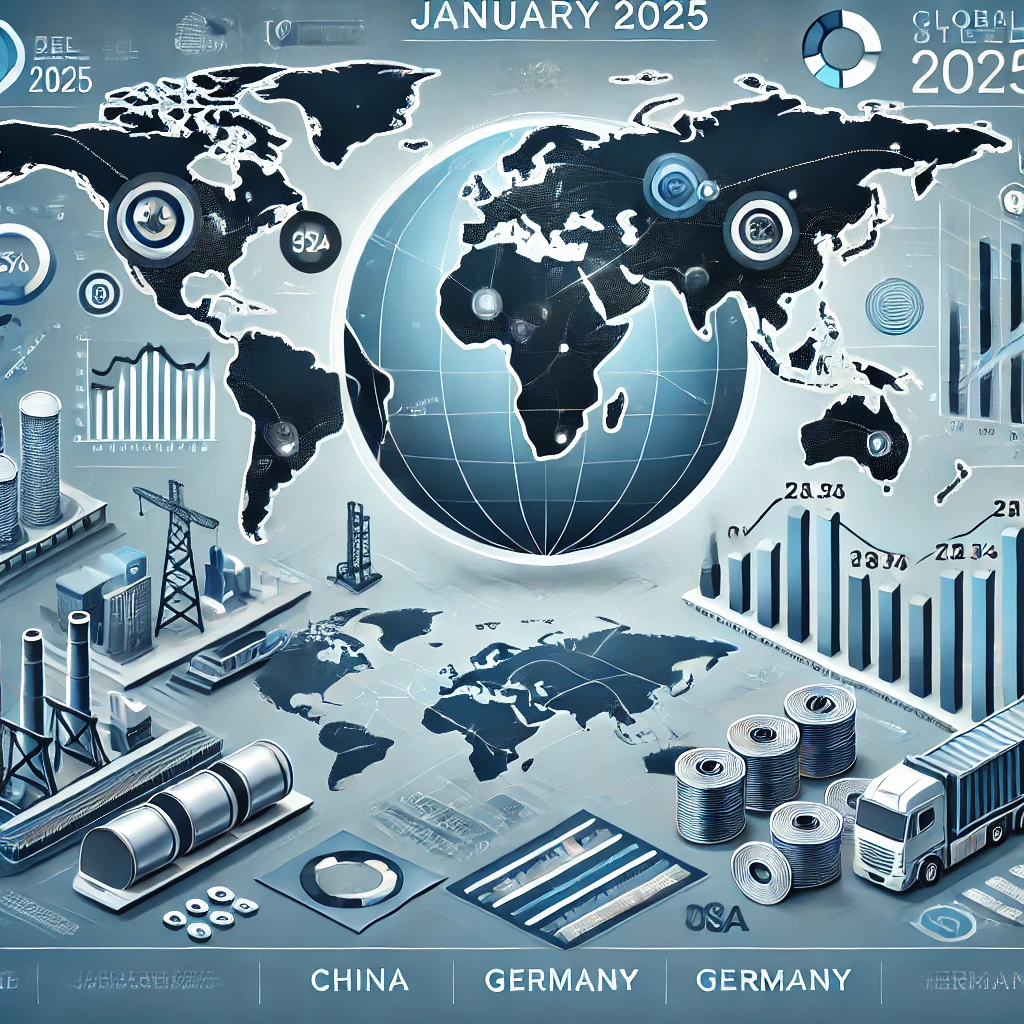
Staying ahead in the steel industry requires real-time insights into global pricing trends. With markets fluctuating due to economic, geopolitical, and supply chain factors, keeping an eye on steel prices is critical for fabricators, contractors, and designers looking to optimize costs and plan effectively.
This comprehensive guide leverages the Skyscraper Technique to provide you with the most up-to-date, in-depth, and valuable insights on steel pricing trends for January 2025.
Why Steel Pricing Matters
Steel is the foundation of modern infrastructure, manufacturing, and industrial design. Even a minor fluctuation in steel prices can significantly impact project costs and profit margins. Understanding these price movements allows businesses to:
- Manage budgets more effectively by anticipating cost changes.
- Optimize purchase timing to capitalize on price dips.
- Forecast future trends for strategic planning and risk management.
By following this guide, you’ll gain a clearer understanding of global steel price trends, helping you stay ahead of the competition.
Global Steel Price Comparison (January 2025)
To provide an accurate comparison, here’s an updated look at steel prices in major markets:
| Country | Flat Steel Price (USD/MT) | HRB Price (USD/tonne) |
|---|---|---|
| China | 1,858 | 448 |
| Germany | 3,125 | N/A |
| US | 3,479 | 839 |
| World Export | N/A | 486 |
(Source: IMARC Group, Procurement Resource)
Key Takeaways:
- The U.S. remains the most expensive steel market, reflecting high domestic consumption and regulatory costs.
- China’s prices are relatively lower, but challenges such as weak global demand and limited exports impact pricing.
- Germany’s market remains stable, but economic slowdowns have led to softened demand.
- The global benchmark HRB price stands at 486 USD/tonne, providing a reference for international markets.
Regional Breakdown of Steel Market Trends
1. Asia: China & India
- China’s steel market is currently experiencing demand-side pressure, with limited export opportunities and domestic consumption slowing.
- India’s steel sector remains stable, with a balanced supply-demand equation, keeping prices more predictable.
- Flat Steel Pricing in China: $1,858/MT (December 2023).
2. Europe: Germany & Beyond
- Geopolitical tensions have led to a decline in steel demand across Europe.
- Construction and manufacturing slowdowns are directly affecting pricing.
- Germany’s Flat Steel Price: $3,125/MT as of December 2023.
3. North America: The U.S. Market
- Hot-Rolled Coil prices peaked in Q2 2024 at $1,500 USD/st but have since adjusted.
- Flat steel prices in the U.S. remain among the highest globally, reaching $3,479 USD/MT by late 2023.
Key Factors Driving Steel Prices in 2025
Understanding the forces behind steel price movements helps industry professionals make better decisions. Here are the top drivers influencing the market:
1. Supply and Demand Imbalances
- Global production fluctuations create pricing volatility.
- A slowdown in construction and manufacturing reduces demand, lowering prices.
2. Geopolitical and Trade Factors
- Tariffs, trade restrictions, and geopolitical instability can impact steel availability and costs.
- Ongoing trade tensions between major economies may create supply shortages or surpluses.
3. Economic Conditions
- Inflation and interest rates influence demand across construction and manufacturing industries.
- Steel prices typically rise when global economies recover and industrial activity surges.
4. Regulatory and Environmental Policies
- New carbon emission standards for steel production could increase costs.
- Government regulations around steel imports/exports may disrupt pricing structures.
Steel Price Forecast for 2025
Analysts predict continued volatility in steel pricing due to a combination of global economic recovery trends, supply chain shifts, and evolving regulations.
Predicted Trends to Watch:
- Potential supply chain disruptions in major steel-producing regions.
- Changes in Chinese export policies impacting global pricing.
- Infrastructure stimulus programs boosting steel demand in North America and Europe.
By tracking real-time pricing trends and staying informed on economic and geopolitical shifts, businesses can make data-driven decisions and optimize their steel procurement strategies.
Conclusion: How to Stay Competitive in a Volatile Market
The global steel market remains complex and dynamic, but having the right insights allows businesses to navigate uncertainties with confidence. Here’s how you can stay ahead:
✅ Monitor global steel price updates regularly. ✅ Leverage market intelligence to anticipate price fluctuations. ✅ Optimize purchasing strategies by aligning with price trends. ✅ Stay informed on economic and regulatory changes that impact pricing.
By utilizing the most up-to-date steel market insights, fabricators, contractors, and designers can effectively manage costs, reduce risks, and gain a competitive edge in 2025.